Traditional Poster
AI-Based Diagnosis/Prognosis
ISMRM & ISMRT Annual Meeting & Exhibition • 10-15 May 2025 • Honolulu, Hawai'i

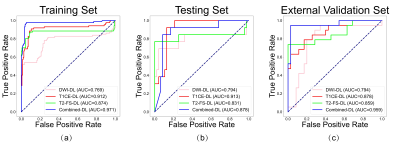 |
5089. Prediction
of Lymphovascular Invasion in Rectal Cancer Using Deep Learning
Models Based on Multi-Parametric MRI
Q. Xue, B. Xie, Y. Sun, Y. Niu, H. Yin, J. Duan, Z. Li, K.
Wang, R. Yan
The First Affiliated Hospital of Xinxiang Medical University, Weihui, China
Impact: This study enhances preoperative diagnosis of
lymphovascular invasion in rectal cancer using deep learning
and multi-parameter MRI, leading to potential improved
treatment strategies, reduced unnecessary surgeries, and
better patient outcomes.
|
|
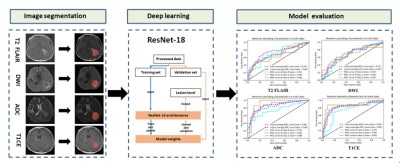 |
5090. Predicting
brain metastases originating from different pathological
subtypes of lung cancer based on multimodal MRI using DL
approach
J. Cao, Y. Liu, Y. Li, X. Luo
Zibo Central Hospital, Zibo, China
Impact: Deep learning based on multimodal MRI can be a
helpful tool for predicts brain metastases originating from
different pathological subtypes of lung cancer. Apparent
diffusion coefficient maps and T1-weighted contrast
enhancement sequence exhibiting optimal predictive
performance.
|
|
 |
5091. A
Study on Constructing Machine Learning Models to Predict
Perineural Invasion in Rectal Cancer Using Combined MR Radiomics
and Clinical Features
H. Shang, Y. Fan, Y. Yang, B. Li, Y. Yi, W. Wang
The First People's Hospital of Foshan, Foshan, China
Impact: This clinical-radiomics model combining T2WI and
DWI imaging offers a powerful tool for preoperative
prediction of perineural invasion in rectal cancer, aiding
personalized treatment planning and prognosis assessment for
better clinical decision-making.
|
|
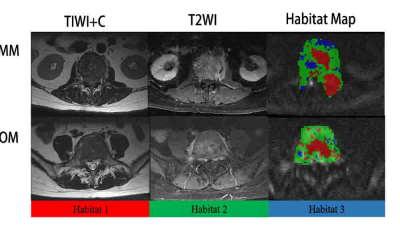 |
5092. Preoperative
differentiation of spinal multiple myeloma and osteolytic
metastasis using diffusion-weighted imaging–based habitat
X. Jun, X. Lizhi, N. Lang
Peking Third Hospital, Beijing, China
Impact: DWI-based habitat imaging shows clinical
potential for noninvasively and preoperatively
differentiating between spine MM and OM.
|
|
|
5093. Development
an Artificial Intelligence Model to Identify BRCA Mutations in
Prostate Cancer Through prostate MRI images
J. Yoon, J. S. Lee, Y. T. Oh
Severance hospital, Yonsei University College of Medicine, Seoul, Korea, Republic of
Impact: MRI-based radiomics models offer a non-invasive,
cost-effective alternative to NGS, potentially reducing the
need for NGS testing. These models could aid in drug
selection and prognosis prediction, enhancing personalized
treatment strategies.
|
||
|
5094. Predicting
Genetic Subtypes of Prostate Cancer Using Radiomics Features
from T2-weighted Prostate MRI Images
J. Yoon, H. Han, Y. T. Oh
Severance hospital, Yonsei University College of Medicine, Seoul, Korea, Republic of
Impact: Our pilot study demonstrated promising results
for a radiomics model capable of predicting genetic subtypes
of prostate cancer. This model demonstrated its ability to
predict AR inhibitor-resistant and docetaxel-resistant
genetic subtypes with AUROCs of 0.84 and 0.77,
respectively.
|
||
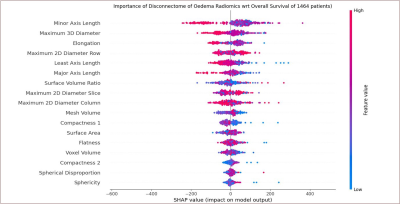 |
5095. Early
GBM recurrence: the influence of peri-lesional oedema and the
disconnectome
M. Tariq, J. Ruffle, S. Mohinta, S. Brandner, P. Nachev, H.
Hyare
UCL, London, United Kingdom
Impact: Identification of features in the peri-lesional
oedema and disconnectome associated with early tumour
recurrence will enable precision treatment planning and
personalised imaging surveillance in glioblastomas.
|
|
 |
5096. AI-Derived
MRI Biomarkers Using Vision Transformer for Predicting
Combination Immunotherapy Outcomes in Liver Cancer
G. Yu, A. Eresen, Z. Zhang, Q. Hou, F. Amirrad, S. Webster,
S. Nauli, V. Yaghmai, Z. Zhang
University of California, Irvine, Irvine, United States
Impact: This study showcases the potential of ViT-based
MRI analysis in distinguishing HCC treatment outcomes,
enabling more precise combination therapy selection and
advancing personalized care for improved patient outcomes.
|
|
 |
5097. Prediction
of molecular markers based on glioma subregions through
radiomics and machine learning
W. Zhao, Y. Wang, H. Kukun, R. Xu, P. Tuxunjiang, G. Han
The First Affiliated Hospital of Xinjiang Medical University, urumqi, China
Impact: Our study predicts biomarkers using glioma
subregion radiomics and machine learning ,
enabling physicians to personalize treatment
non-invasively. This approach will inspire other researchers
to validate larger datasets and incorporate clinical genetic
data.
|
|
 |
5098. Deep
Learning and Clinical Data Fusion in Prostate Cancer: Diagnosis
of Clinically Significant Lesions Using Multiparametric MRI
G. Valizadeh, F. Moodi, F. Khodadadi Shoushtari, M.
Morafegh, M. Ghafoori, H. Saligheh Rad
Quantitative MR Imaging and Spectroscopy Group (QMISG), Tehran University of Medical Sciences, Tehran, Iran (Islamic Republic of)
Impact: This study’s integration of AI, multiparametric
MRI, and clinical data refines prostate cancer diagnostics,
equipping clinicians with a robust tool for precise lesion
classification. This approach fosters personalized patient
management, reduces overtreatment, and encourages further
advancements in AI-driven oncology.
|
|
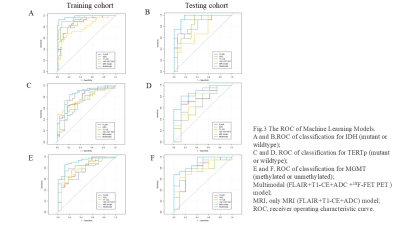 |
5099. Multiparametric
radiomics-integrated models for predicting glioma molecular
genotypes using 18F-FET PET/MRI
J. Bai
Xuanwu Hospital, Beijing, China
Impact: The radiomics models, which incorporate
structural, proliferative, and metabolic information based
on multiparameter 18F-FET PET/MRI, demonstrated effective
predictive performance for the molecular biomarker status of
glioma and had the potential to optimize diagnostic
processes.
|
|
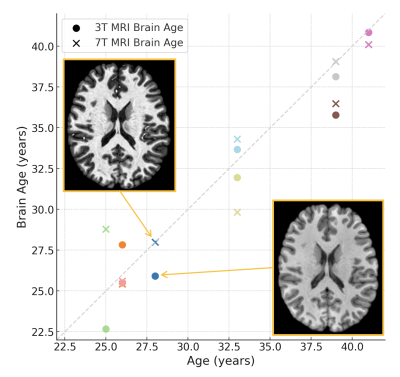 |
5100. Exploring
the Potential of 7T MRI for Brain Age Prediction
F. La Rosa, E. Dereskewicz, J. Dos Santos Silva, J. Galasso,
N. Garcia, R. Graney, S. Levy, H. Greenspan, D. Reich, J.
Sumowski, M. Cuadra, E. Beck
Icahn School of Medicine at Mount Sinai, New York, United States
Impact: This study investigates 7T MRI for precise brain
age prediction. Its application to individuals with multiple
sclerosis demonstrates the potential for brain age as a
valuable biomarker for assessing accelerated aging and the
risk of disability progression in neurological conditions.
|
|
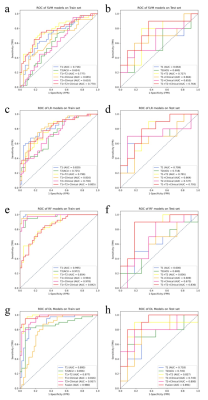 |
5101. Multimodal
MRI deep learning for predicting central lymph node metastasis
in papillary thyroid cancer
X. Wang, H. Zhang, S. Hu, P-Y Wu
Affiliated Hospital of Jiangnan University, Nanjing, China
Impact: The high predictive accuracy of the DL-Fusion
model can enhance clinical decision-making, allowing for
more precise assessment of CLNM and reducing the frequency
of unnecessary CLND in PTC patients.
|
|
| 5102. WITHDRAWN | ||
 |
5103. Deep
Learning-Driven Prediction of Pediatric Spinal Cord Injury
Severity Using Comprehensive Structural MRI Analysis
Z. Sadeghi Adl, S. Naghizadehkashani, L. Krisa, D.
Middleton, M. Alizadeh, A. Flanders, S. Faro, F. Mohamed
Thomas Jefferson University, Philadelphia, United States
Impact: This research identifies structural MRI
biomarkers for pediatric SCI severity, offering a precise
tool for assessing injury severity. The approach offers
clinicians a potential tool for refined injury assessment
and sets a foundation for further advancements in pediatric
SCI management.
|
|
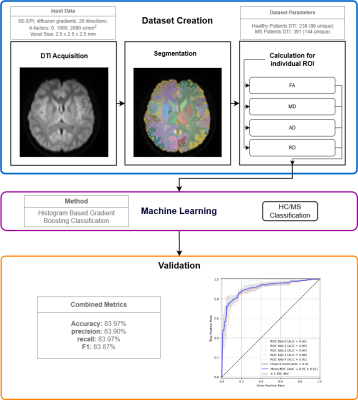 |
5104. Detecting
Multiple Sclerosis with Machine Learning using DTI Metrics
J. Lasek, A. Słowik, A. Krzyżak
AGH University of Kraków, Krakow, Poland
Impact: Using DTI metrics allows the development of
machine learning models that are capable of distinguishing
multiple sclerosis patients from healthy controls, enabling
accurate early-stage diagnosis, and providing clinicians
with a non-invasive diagnostic tool.
|
|
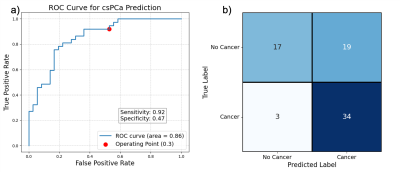 |
5105. Real-time
prostate cancer risk stratification and scan tailoring using
deep learning on abbreviated prostate MRI: A prospective
evaluation
P. Johnson, T. Dutt, A. S. Saimbhi, L. Ginocchio, K. T.
Block, D. Sodickson, S. Chopra, A. Tong, H. Chandarana
Bernard and Irene Schwartz Center for Biomedical Imaging, Department of Radiology, New York University Grossman School of Medicine, New York, United States
Impact: This study demonstrates that a DL model can
guide the selective use of mpMRI based on bpMRI, optimizing
resources. This approach could streamline PCa screening,
improve patient care, and inspire further research into
adaptive and personalized MRI protocols.
|
|
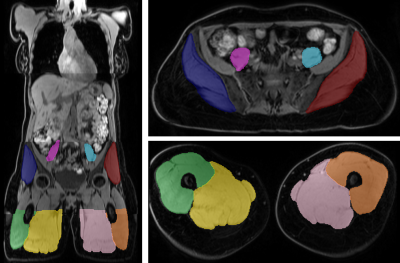 |
5106. Predicting
Diabetes Using Muscle Features Derived from Whole-Body MRI and
Tabular Data: A SHAP Analysis of a Large Cohort (NAKO)
M. Winter, L. Kiefer, F. Schick, B. Yang
University Hospital Tuebingen, Tuebingen, Germany
Impact:
This study shows that MR-based skeletal muscle features, particularly fat fractions of the gluteus and psoas muscles, can improve diabetes classification model’s predictions. Using several MRI-derived predictors, diabetes diagnosis may become possible purely from MRI, i.e., without targeted diabetes-specific measurements. |
|
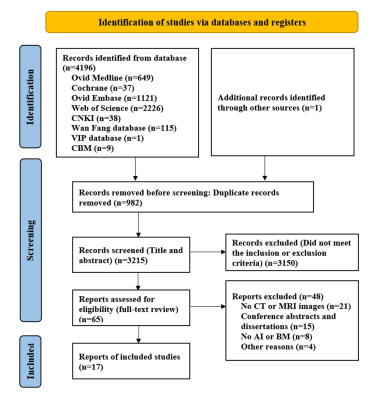 |
5107. Accuracy
of artificial intelligence in detecting tumor bone metastasis: a
systematic review and meta-analysis.
h. Tao, Z. Zhang, S. Zhou
The First Clinical Medical College of Gansu University of Chinese Medicine, Lanzhou, China
Impact: The present meta-analysis demonstrated the
substantial diagnostic value of AI in identifying BM, with
CT exhibiting superior performance compared to MR. However,
further large-scale prospective studies are needed to
validate the clinical utility of AI in managing BM.
|
|
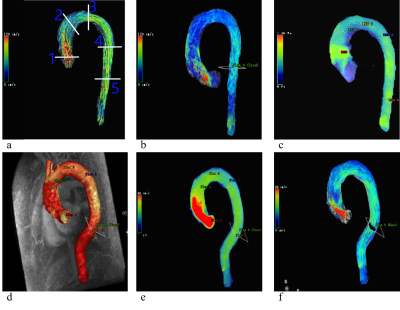 |
5108. AI-Based
Aortic Calcification Score with 4D Flow MRI to Evaluate Aortic
Remodeling and Predict Cardiovascular Events in Chronic Kidney
Disease
X. Lu, Y. Yan, X. Chen, W. Liu, Y. Zha
Renmin Hospital of Wuhan University, Wuhan, China
Impact: The combination of AI-ACS and 4D Flow MRI
provides a quantitative assessment of aortic remodeling in
CKD patients, enhancing cardiovascular risk prediction and
offering a novel approach for cardiovascular management in
CKD.
|
The International Society for Magnetic Resonance in Medicine is accredited by the Accreditation Council for Continuing Medical Education to provide continuing medical education for physicians.